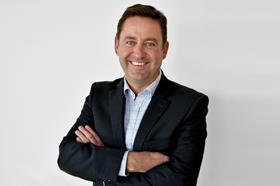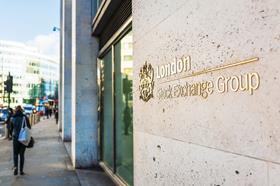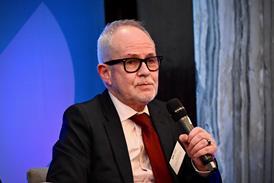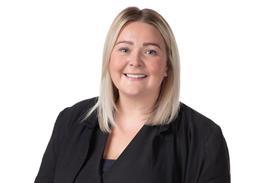On 15 March this year, DWF became the first and only law firm to be listed on the London Stock Exchange’s prestigious main market.
The low down
When DWF listed on London’s main market on 15 March, it achieved a world first. The benefits to the firm and its partners have stretched well beyond the £95m raised at the IPO: enhancing the firm’s profile and reputation both in the UK and internationally, and giving it new ways to incentivise staff and achieve a wider sense of ownership within the firm. But there have been some big hurdles to jump along the way. Converting a 300-partner practice into a plc led by a board with an independent majority was no easy task. And regulators in jurisdictions around the globe needed to be convinced that a robust structure had been found to comply with each of their rules on law firm ownership and governance.
The Manchester-headquartered firm, which in the last decade or so has transformed itself from a ‘northern upstart’ regional practice, to a huge global outfit with more than 3,000 people spread across 27 locations worldwide, burst on to the FTSE raising an impressive £95m. Of this, £75m will be used for expansion and investment in the business, including £10m earmarked for IT investment. Some £20m was distributed to the equity partners selling shares. The business achieved a valuation of £366m, despite Brexit-related jitters in the City.
So how exactly did DWF make the transition from an LLP with more than 300 partners (including nearly 70 equity partners) to a publicly traded plc with shareholders and an executive board that has an independent majority? The man with the answers is DWF’s Matthew Doughty, whose 20 years’ experience of capital markets work made him the perfect partner to lead the IPO project.
People tend to have a view of us that may be two or three years behind where we actually are. So the brand visibility that you get out of an IPO is great
Matthew Doughty, DWF
Doughty sits across the table in the slick environs of the firm’s City offices in the iconic ‘Walkie Talkie’ skyscraper on Fenchurch Street. At his elbow is a smart black notebook branded Stifel; the investment bank that was DWF’s sponsor in the IPO.
He explains how it all started: ‘Back in October 2017, Stifel contacted me to say, “we’ve been doing some research in the legal sector, would you like to hear some of our thinking?” They had seen a lot of investor appetite from working with litigation funders, which had opened their eyes to the legal sector.’
DWF’s chief executive officer, Andrew Leaitherland, invited Stifel in to meet the DWF board, and the investment bank made a compelling case for why an IPO could make sense for the firm. Robin Mann, head of European investment banking at Stifel Europe, recalls: ‘There were a number of things that struck us about the legal sector. It had strong revenue growth and the ability to grow its top line in most conditions, including the financial crisis. But there were challenges around working capital management and how you invest in IT, for instance, or lateral hires. How do you square that need to invest with the partnership model?’
So what were the key drivers for DWF to undertake such a radical step? Fundamentally, it wanted to fuel expansion: both internationally, and in its highly profitable complementary services division Connected Services. But there have been other benefits. These include being able to use shares to incentivise staff; and the explosion of publicity that the IPO brought, helping to counter the ‘brand lag’ from which DWF suffers.
‘People tend to have a view of us that may be two or three years behind where we actually are. So the brand visibility that you get out of an IPO is great, particularly internationally,’ Doughty says. ‘This [IPO] is unique outside the UK [or Australia]. If you’re in Germany or France, there is no competitor that’s ever done anything like this and so it’s a truly unique talking point.’
As a capital markets lawyer, Doughty now finds that when he meets investment banks, they will sometimes comment on the latest activity at DWF, because it was on their trading screens at 7am that morning. ‘To have the City community learning about your business, almost in real time – that’s a massive step forward for us,’ he remarks.
Having established the potential benefits of an IPO, the next step was to figure out whether it would be possible to restructure the firm into a plc model. At this stage, planning was kept to a tight-knit group of senior management. ‘We had two different constituencies within the partnership – equity and non-equity – and you’ve got to come up with a model that works for everybody,’ Doughty says.
From an investor perspective, the problem with partnerships is that, because the partners take the profits out every year as drawings, no value is left in the business itself. So if a partnership wants to attract investors, it must start leaving some profits in the business – and that means partners reducing their take-home pay. But why would they agree to do that?
DWF devised a plan in which the equity partners, who would need to vote in favour of any decision to become a public company, would take a 60% cut to their monthly income, in return for an allocation of shares that would yield dividend income roughly equivalent to the sums they were giving up. On top of that the shares themselves would have a capital value, so the partners would be better off overall. The fixed share partners took a 10% pay cut in return for a smaller allocation of shares.
While partners might be economically incentivised to adopt a corporate model, would they be willing to give up their voting rights on key decisions? Doughty notes that, with Leaitherland having been CEO since 2006, the firm had been operating a ‘corporatised’ model for a while, with an executive board. However, some board-level decisions were still being brought back to the equity partners for a vote.
‘Our equity partners’ voting control was diluted as a result of the IPO, and you’ve got to get people culturally aligned to that way of thinking,’ Doughty concedes. But he points out that the partners still have a shareholder vote, and 63.5% of the plc’s shares are held by partners.
Another daunting hurdle related to DWF’s international offices, 14 of which were in places that did not allow listed law firms. The solution was found through a complex ‘valve partner’ arrangement which is common in international law firms, but unusual in a plc environment. Essentially, the plc owns and controls businesses in places where it is allowed to do so, while offices in other territories sit outside the plc group and are controlled through DWF LLP, owned by the DWF partners.
‘The bottom line is that we had to spend many months devising a structure that we felt worked within the regulatory confines, as well as from a tax point of view, and from the point of view of something that investors could understand and would be prepared to invest in. It had to be very robust,’ Doughty explains.
The firm went through its proposed new structure in detail with every regulator in every relevant jurisdiction – often with multiple meetings – to ensure each was comfortable with the setup. ‘That certainly added to the timeline, which is one of the reasons why the IPO took 18 months to achieve,’ Doughty notes.

Knights Errant: IPO with a difference
The first law firm to become publicly listed was Slater and Gordon, which launched on the Australian Securities Exchange in 2007. But while the Legal Services Act made UK law firm IPOs possible in 2007, none took the plunge until 2015, when a handful of practices began listing on London’s Alternative Investment Market. Gateley started the ball rolling in 2015, followed by: Gordon Dadds in 2017; Keystone in November 2017; Rosenblatt in May 2018; and then Staffordshire powerhouse Knights, which was valued at £103.5m and raised what at the time was a record £50m, in June 2019. DWF then became the first to list on the main market, this March.
In contrast with DWF, Knights’ boss David Beech believes the best way to get ready to list is to ditch the partnership model well in advance. Knights did this in 2012, when it transformed from a seven-partner practice to a corporate model with five shareholders, with Beech as majority shareholder. This made the flotation process much more straightforward. ‘We really started preparing to float seven years ago, when we corporatised the model,’ Beech says. ‘You need to get all the tough stuff done off market, get your corporate model sorted, get yourself profitable, keeping profits in the business – and then you’ll be ready to float, with all the scrutiny that involves.’
Beech says the firm’s strategy is to attract ‘growth’ rather than ‘income’ investors, who require higher dividend payments. ‘If you’re in a partnership, you have to pay your profits out post-IPO. You replace the reduction in income to the partners with a big dividend policy,’ he adds.
With much work done on the big structural and regulatory issues, one vital question still begged an answer before the DWF partners could be told of the IPO plans: would any investors actually want to buy shares? It was time for DWF to carry out ‘early look’ marketing – a series of meetings organised by Stifel, at which DWF’s CEO and CFO met institutional investors to gain a broad indication of interest.
‘For a lot of investors, it was the first legal business that they had engaged with as an investment proposition, so they had no frame of reference,’ Mann says. But they were interested in the sector and encouraged by DWF’s openness towards the benefits of IT – as well as the fact that its profit margins were not the best in the industry, so there was room for improvement. Investors also liked the fact that DWF acted for the same clients in several jurisdictions, Mann says, because they viewed this as making its income ‘stickier’.
Stifel had been expecting investors to focus heavily on the potential risks associated with law being a ‘people business’. Shares received by partners at the IPO would vest over five years, but after that, there was a potential ‘cliff-edge’ risk that key fee-earners would be lost. This was managed by a scheme devised by Doughty, in which shares worth 10% of the market capitalisation – so around £36m worth – were set aside in an employee benefit trust, enabling the firm to reward high performers with shares that vest over a period of time. A new lateral hire partner, for example, might be given shares on arrival that vest over five years, while a junior lawyer moving up a grade might get shares vesting over three years as part of the promotion package. ‘Matt had developed a thoughtful way to retain people over a period of time, and we didn’t get a lot of investigation [from investors] over a cliff-edge risk,’ Mann notes.
With a warm reception from investors, partners could finally be brought into the loop. But keeping things under wraps until that point had been no easy task. ‘Communication, both internal and external, is a very big work stream,’ Doughty remarks. ‘On something like this, where you’ve got such a large stakeholder group internally – and lawyers are a gossipy bunch at the best of times – we were paranoid about leaks. We managed that risk heavily.’
The plans did ultimately leak, in June 2018 – eight months into the planning. ‘What we learned through the process was that something like this can be a huge distraction to all of the people in your business. Keeping it to a close-knit group of management until you’re sure that you’re actually going to propose it to the partnership is incredibly important I think,’ Doughty says.

IN NUMBERS
£95m - Amount raised when DWF listed on London’s main market
14 - Number of DWF international offices in places that did not allow listed law firms
£50m - Amount raised when Knights listed on the Alternative Investment Market
With partnership approval of the plans, the firm conducted a few more rounds of test marketing to investors, before entering the final marketing phase with a burst of activity. First, it published a detailed ‘registration document’ announcing its intention to float, and briefed analysts at the investment banks working with DWF (Stifel, Jefferies and Zeus Capital). The research analysts then published their own documents, including their all-important financial forecasts, and met investors on a one-to-one basis to face forensic questioning over their findings. After that came a two-week ‘management roadshow’, in which DWF’s CEO and CFO wore down their shoe leather walking around the City presenting to investors. And the investment bankers started ‘building the book’ – calling up investors to see if they wanted to invest, and at what price.
‘The months or years of work on the IPO all come down to the last two weeks, and even the last few days,’ Doughty frowns. ‘It takes a certain amount of bravery to do it.’
The courage paid off, and the champagne corks popped around the globe as the listing ceremony on 15 March was livestreamed to office parties across the firm’s international network. ‘One of the things we really wanted to do with the IPO was to distribute a sense of ownership throughout the business,’ Doughty says. ‘It was a galvanising moment.’
The benefits of the IPO have gone well beyond the £95m DWF raised on its listing – the move has strengthened its reputation, its governance and its attractiveness as an employer. But it is fair to point out that the share price performance has been mixed.
Doughty is sanguine: ‘There’s a danger that you can become a slave to the share price. It’s important that you don’t get too distracted with it. There’s tension in that, because you’ve vested shares in a lot of people, and from an incentivisation point of view you want to see your share price improve. But you can’t let that drive your strategy and the need to announce deals.
‘Fundamentally, you’ve got to do what’s right for the business.’
Rachel Rothwell is a journalist



























No comments yet